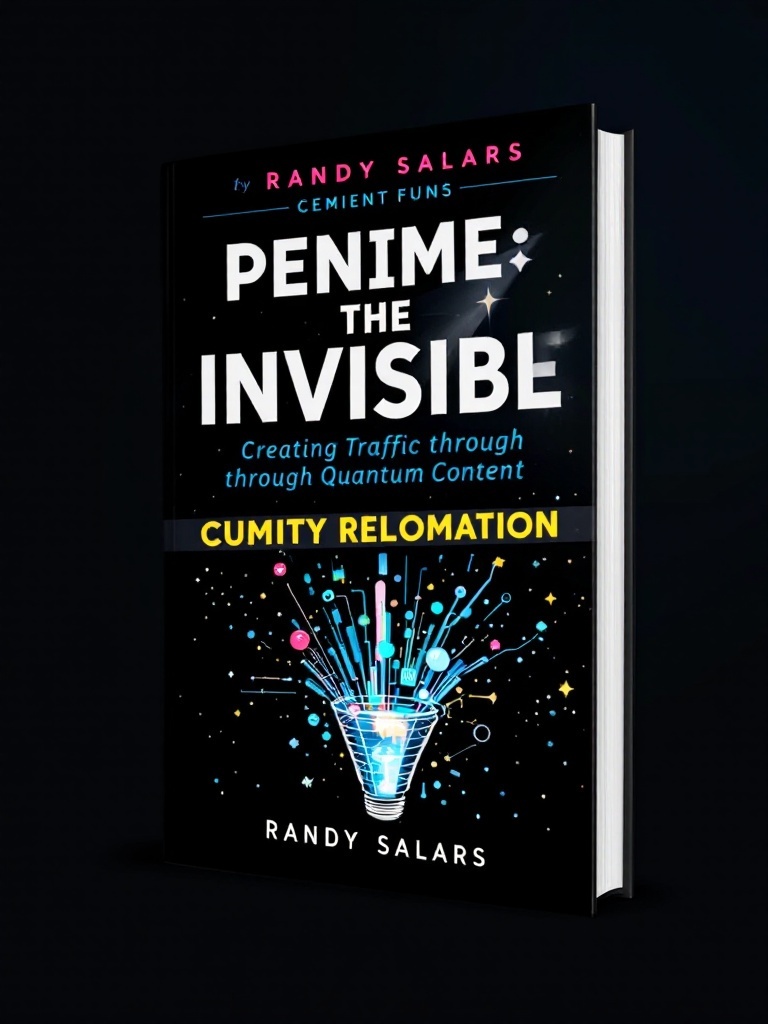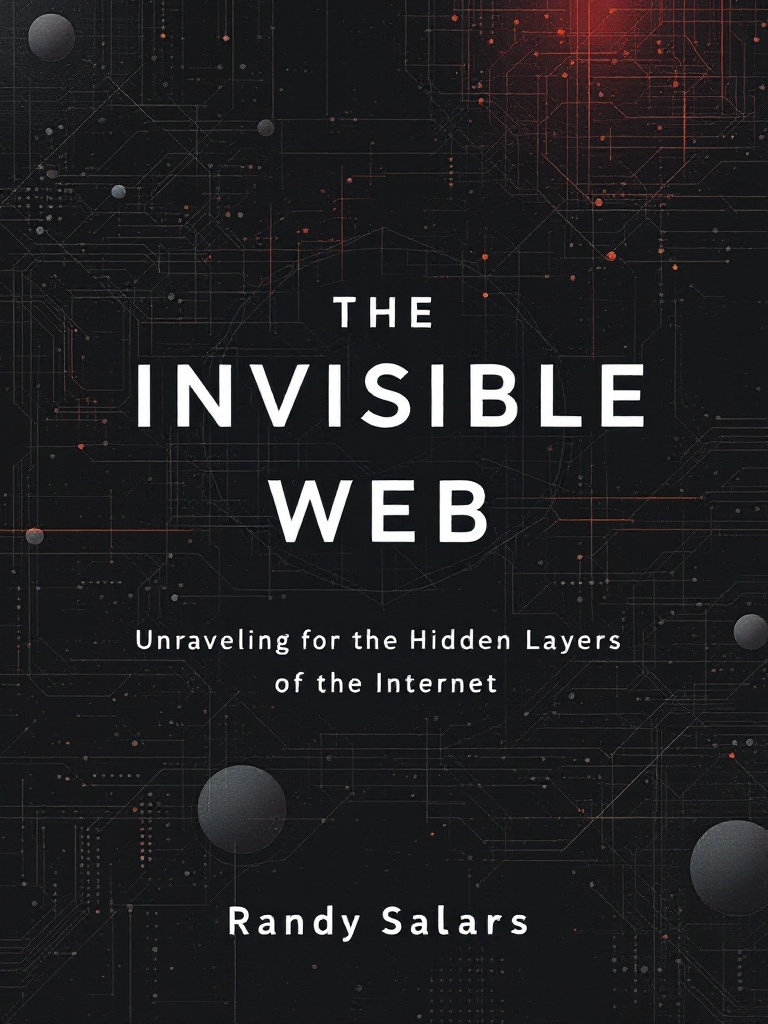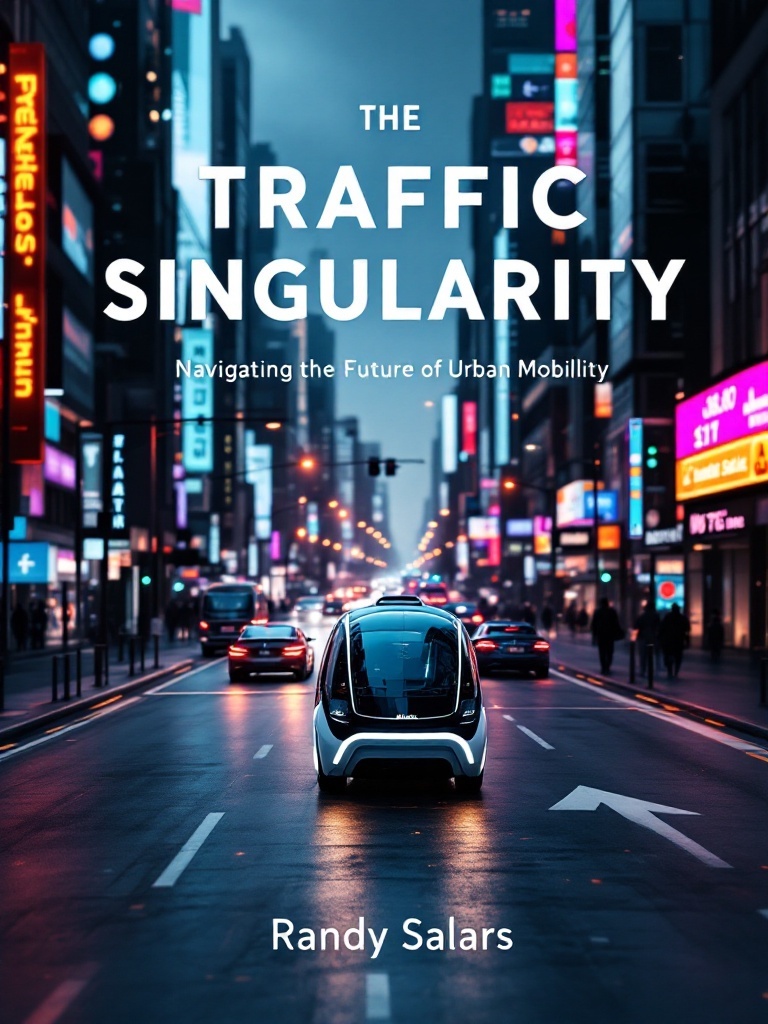The Traffic Singularity: Navigating the Future of Urban Mobility
$0.00
The Traffic Singularity: Navigating the Future of Urban Mobility
Unlock the secrets to the cities of tomorrow with “The Traffic Singularity”! This groundbreaking book delves into the transformative trends shaping urban mobility, offering readers a roadmap to navigate the complexities of modern transportation. From smart infrastructure and autonomous vehicles to sustainable practices and digital innovations, this compelling guide provides a comprehensive analysis of the forces driving change.
What sets “The Traffic Singularity” apart is its unique blend of expert insights, real-world case studies, and actionable solutions for urban planners, policymakers, and everyday commuters alike. Dive into thought-provoking discussions that challenge conventional wisdom and inspire visionary thinking. As cities evolve, equip yourself with the knowledge to thrive in a rapidly changing landscape. Don’t just witness the future—be a part of it! Transform your understanding of urban mobility today.
Description
Unleash the Future of Urban Mobility: Discover ‘The Traffic Singularity’
Are You Ready to Transform How We Navigate Cities?
In a world where urban congestion threatens our quality of life, Randy Salars unveils a groundbreaking vision for a smarter, more efficient future in his latest book, The Traffic Singularity: Navigating the Future of Urban Mobility. This essential read is not just for city planners and transportation enthusiasts; it’s for anyone who wishes to understand and influence the future of how we move in our urban environments.
Why You Can’t Afford to Miss This Book
– Revolutionary Insights: Understand the cutting-edge technologies that are reshaping urban transport, from autonomous vehicles to smart traffic systems.
– Practical Solutions: Discover actionable strategies that cities can implement to alleviate congestion and enhance mobility.
– Stay Ahead of the Curve: Equip yourself with knowledge that will keep you ahead in a rapidly evolving landscape of urban transportation.
What You’ll Learn
In The Traffic Singularity, you will delve into:
– The Evolution of Urban Mobility: Explore how transportation has changed and where it’s headed.
– The Role of Technology: Gain insight into how AI and data analytics are transforming traffic management and urban planning.
– Sustainable Practices: Learn about eco-friendly innovations that promise to create greener, more livable cities.
– Future Scenarios: Envision potential futures for urban mobility and how you can be a part of the change.
Meet the Author
Randy Salars is a seasoned entrepreneur, digital strategist, and former U.S. Marine, bringing over 40 years of leadership and business expertise, sharing his knowledge to inspire success across traditional and digital industries. Randy’s unique blend of practical experience and visionary thinking makes him the perfect guide for navigating the complexities of urban mobility.
What Readers Are Saying
“Randy Salars has done it again! His insights into urban mobility are not only enlightening but also incredibly actionable. A must-read for anyone interested in the future of our cities!”
— Jessica T., City Planner
“An eye-opening read that challenges conventional thinking about traffic and mobility. Randy’s perspective is refreshing and necessary for our times.”
— Mark B., Transportation Analyst
“The Traffic Singularity is not just a book; it’s a roadmap for the cities of tomorrow. Randy Salars is a true thought leader!”
— Emily R., Urban Development Advocate
Take Action Now!
Don’t let the future of urban mobility pass you by. Equip yourself with the knowledge and insights that can inspire change and innovation in your community.
Get your copy of The Traffic Singularity: Navigating the Future of Urban Mobility by Randy Salars today and be part of the movement towards smarter, more sustainable cities!
[Buy Now]
Embrace the future—your journey starts here!
What You’ll Learn:
This comprehensive guide spans 165 pages of invaluable information.
Chapter 1: Chapter 1: Understanding Traffic Congestion
– Section 1: The Nature of Traffic Congestion
– Section 2: Historical Context of Urban Mobility
– Section 3: Economic Implications of Congestion
– Section 4: Psychological Effects on Commuters
– Section 5: Case Study: Los Angeles Traffic Patterns
Chapter 2: Chapter 2: The Role of Technology in Traffic Management
– Section 1: Intelligent Transportation Systems (ITS)
– Section 2: Data-Driven Decision Making
– Section 3: The Impact of Smart Infrastructure
– Section 4: Future Technologies: AI and Machine Learning
– Section 5: Case Study: Seattle’s Smart Traffic Initiative
Chapter 3: Chapter 3: The Emergence of Autonomous Vehicles
– Section 1: Understanding Autonomous Vehicle Technology
– Section 2: Legal and Ethical Considerations
– Section 3: Potential Impacts on Traffic Flow
– Section 4: Public Perception and Acceptance
– Section 5: Case Study: Waymo’s Pilot Programs
Chapter 4: Chapter 4: Urban Planning and Traffic Singularity
– Section 1: Integrating Transportation and Urban Design
– Section 2: Transit-Oriented Development
– Section 3: The 15-Minute City Concept
– Section 4: Policy Frameworks for Sustainable Mobility
– Section 5: Case Study: Copenhagen’s Urban Mobility Strategy
Chapter 5: Chapter 5: The Future of Public Transportation
– Section 1: Innovations in Public Transit
– Section 2: Enhancing User Experience
– Section 3: Funding and Investments
– Section 4: Challenges Facing Public Transit Systems
– Section 5: Case Study: Singapore’s Public Transportation System
Chapter 6: Chapter 6: The Role of Policy in Shaping Mobility
– Section 1: Government Regulations and Traffic Management
– Section 2: Incentives for Sustainable Transportation
– Section 3: The Role of Community Engagement
– Section 4: International Policies and Best Practices
– Section 5: Case Study: Amsterdam’s Cycling Policies
Chapter 7: Chapter 7: The Impact of the Gig Economy on Urban Mobility
– Section 1: Overview of the Gig Economy
– Section 2: Disruption of Traditional Transit Systems
– Section 3: Regulation and Oversight Challenges
– Section 4: Environmental Considerations
– Section 5: Case Study: Uber’s Influence on City Traffic
Chapter 8: Chapter 8: Environmental Sustainability and Urban Mobility
– Section 1: The Intersection of Traffic and Climate Change
– Section 2: Green Transportation Options
– Section 3: Urban Green Spaces and Mobility
– Section 4: Climate Adaptation Strategies for Cities
– Section 5: Case Study: Vancouver’s Green Transportation Plan
Chapter 9: Chapter 9: The Social Dimensions of Urban Mobility
– Section 1: Social Equity in Transportation
– Section 2: Mobility and Quality of Life
– Section 3: The Role of Technology in Improving Accessibility
– Section 4: Community-Based Transportation Solutions
– Section 5: Case Study: Detroit’s Community Transit Initiatives
Chapter 10: Chapter 10: Preparing for the Traffic Singularity
– Section 1: Defining the Traffic Singularity
– Section 2: Strategies for Adaptation
– Section 3: Fostering Innovation in Transportation
– Section 4: Building Resilient Transportation Systems
– Section 5: Case Study: Singapore’s Future Mobility Vision





